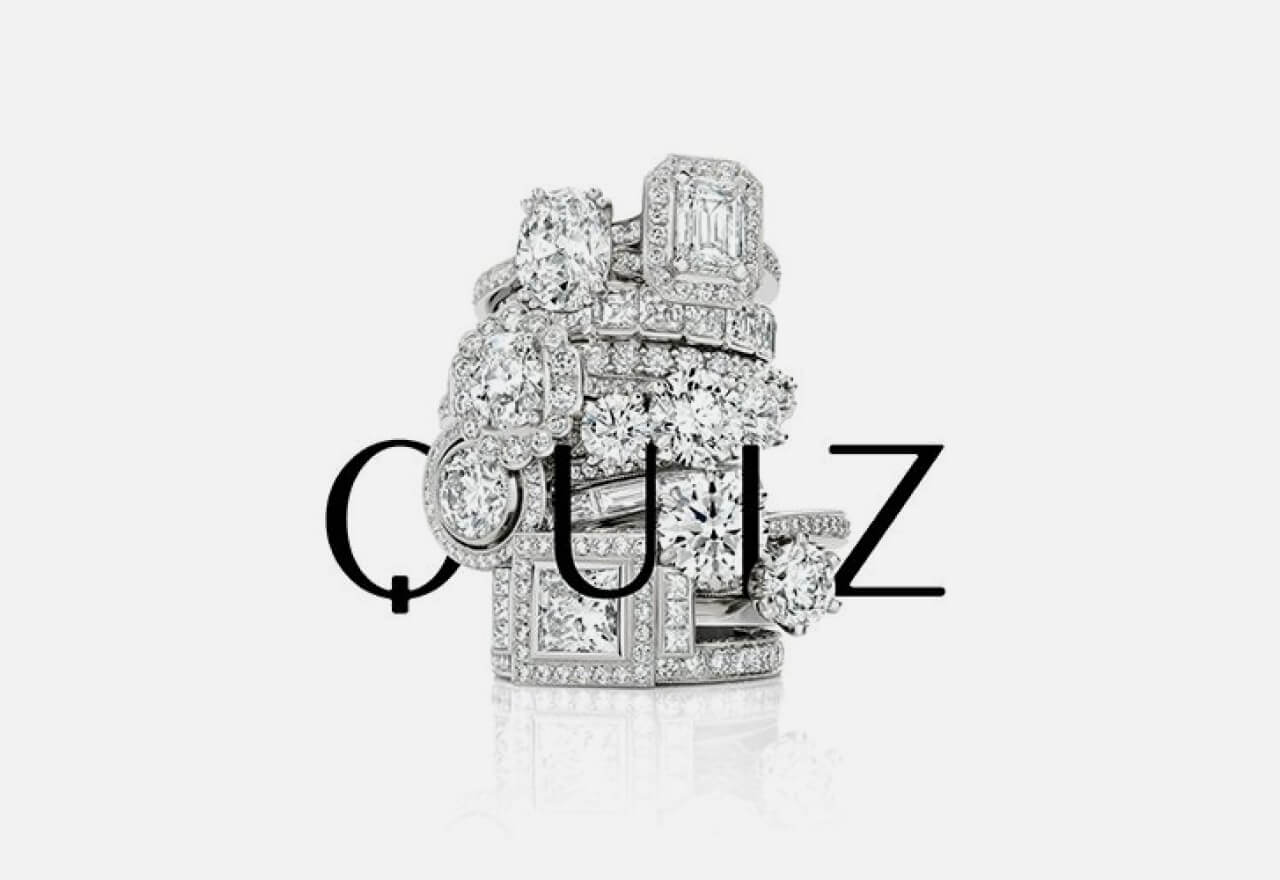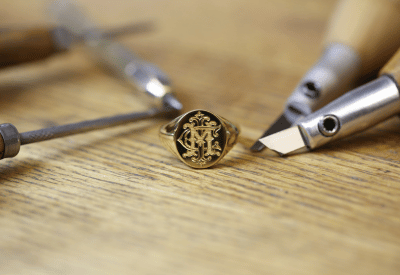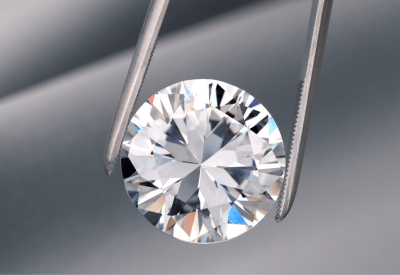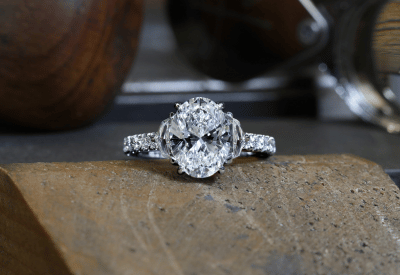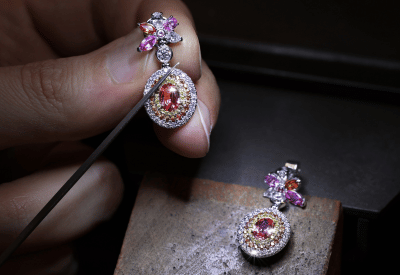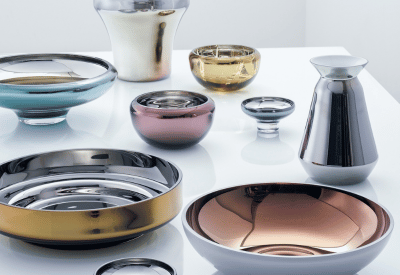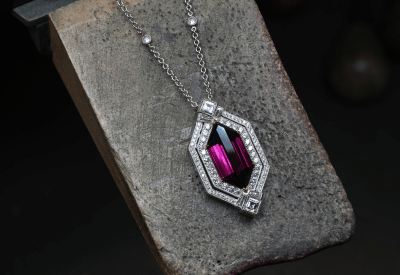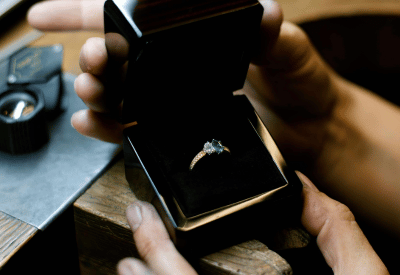Your shopping cart is empty, click here to continue shopping.
Many will say that colour is the second most important element, after cut, when it comes to diamonds. This is purely because the colour of the diamond can be viewed by the naked eye.
However, despite the term, the colour of the diamond is all about what you cannot see. Quite simply, the less colour, the higher the value. Naturally, colour manifests as a pale yellow. This is why the colour grade is determined by the least amount of colour possible. Most diamonds run from completely colourless to near colourless, with tinges of yellow or brown.
Of course, there is always an exception to the rule, and when it comes to colour, the exception is fancy colour diamonds.
DIAMOND COLOUR SCALES
The rarity of the colour, and therefore value of the diamond, is determined by a scale, running from D (the least colour and the most valuable) to Z (noticeable colour and the least valuable).
D Colour Diamonds – Diamonds in the D-grade range are completely colourless. They are extremely rare and thus, the most valuable. If you choose a D-grade diamond, it is going to look perfect in every shape!
E Colour Diamonds - F Colour Diamonds – To the naked eye, the diamond is colourless, however an experienced gemmologist would be able to detect a slight hint of colour.
G Colour Diamonds - H Colour Diamonds – Colour is difficult to detect with the naked eye. The diamond is near colourless. Colour may be detected when placed next to a diamond of better grade. These diamonds are of excellent value and ideal for a platinum or white gold setting.
I Colour Diamonds - J Colour Diamonds – Colour can be slightly detected by the naked eye. The diamond is near colourless and is of very good value. This is because once the diamond is set in jewellery, particularly in yellow gold jewellery, it can appear colourless.
K Colour Diamonds - M Colour Diamonds – Noticeable colour that is easily detected.
N Colour Diamonds - Z Colour Diamonds – Strong noticeable colour that is very easily detected by the naked eye.
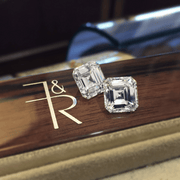
DIAMOND COLOURS EXPLAINED
The exception to the colourless rule is of course, those diamonds that are meant to be coloured. In contrast to the idea that the least colour equates to the most value, in coloured diamonds, it’s the most saturated that are the most expensive. In fact, even slight colour differences can have a huge impact on value.
The most commonly known colours are brown and yellow diamonds, and the rarest colours are red, green and blue with medium to dark tones and moderate saturation. Pink is generally classified as one of the rarest colours you can get, accounting for less than 0.02% of the total carats of rough diamonds produced.
Coloured diamonds come in a variety of hues and their value is based on tone and saturation as well as:
Hue – Refers to the dominant colour of the diamond, such as pink, blue, yellow etc.
Tone – The amount of light or darkness of the hue
Saturation – How intense the colouration of the hue is
And then, of course, there is the grading of the colour. The grading is largely determined by the colour. For example, yellow diamonds come in a variety of saturations – you may have a grayish yellow, a brownish yellow, a greenish yellow, etc. – while blue diamonds are quite limited. Every little detail matters because it can mean the difference between thousands of dollars. The four main gradings are:
Fancy light – The most common
Fancy
Fancy intense
Fancy vivid – The most rare
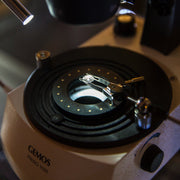
FANCY DIAMOND COLOURS
Fancy coloured diamonds have become increasingly popular in the last 20 years, with many celebrities sporting fancy coloured engagement rings. One of the most iconic of these being the 6.1 carat pink diamond engagement ring Ben Affleck gave to Jennifer Lopez back in 2002.
When it comes to colour diamonds, some are more common than others.
Red Diamonds – Red or reddish colours are extremely rare, thus high in value.
Pure Pink Diamonds – While rare, are more popular than purplish, orange or brownish-tinged pink diamonds.
Blue Diamonds – Exceptionally rare – they tend to have a hint of grey, which means they’re not as saturated as sapphires. Boron impurities determine the deepness of the colour, so the more boron, the deeper the blue.
Green Diamonds – Tend to be light in tone and low in saturation. The hue is generally confined to the surface so cutters will try to leave as much of the natural rough stone as possible. When it comes to the colour, the green is often derived from radiation displacing carbon atoms when the diamond lies near radioactive rocks. Alternatively, the green colouring can occur by irradiation. However, green diamonds are generally treated with suspicion as the natural colouration is extremely rare.
Brown Diamonds – The most common colour and they range in tone from very light to very dark. Most consumers prefer those with a golden or reddish appearance.
Yellow Diamonds – Not to be confused with white diamonds that have a yellowish tint, fancy yellow diamonds are the second most common, and are often marketed as “canary”.
Black Diamonds – Since the 1990s, there has also been increasing demand for black diamonds.
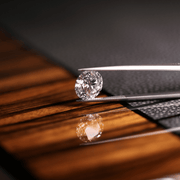
CHOOSING THE IDEAL DIAMOND COLOUR FOR YOU
If you’re looking for diamonds, as with anything, it’s always going to come down to your budget.
For colourless diamonds, purists will never go below an F-grade diamond. Despite this, if you’re looking for excellent value but can’t afford the completely colourless grades, little or no noticeable colour to the untrained eye will still give you good value while being nice to your wallet. In this case, grades of G-I are recommended. If this is the best option for you, keep in mind that the jewellery setting, i.e. whether the diamond is paired with white gold, or yellow gold etc., can greatly impact the appearance of the diamond’s colour. So be sure to choose a setting that will help make the diamond appear colourless.
Fairfax & Roberts offer a range of diamonds predominantly in the D-G colour range. Visit our Sydney store for stunning diamond engagement rings, wedding bands, earrings, necklaces, bracelets, and other beautiful jewellery for both men and women.
DIAMOND COLOUR GRADE EXAMPLES
![]()
D Colour Diamonds
![]()
E Colour Diamonds
![]()
F Colour Diamonds
![]()
G Colour Diamonds
![]()
H Colour Diamonds
![]()
I Colour Diamonds
![]()
J Colour Diamonds
![]()
K-L Colour Diamonds
![]()
M-O Colour Diamonds
![]()
P-Z Colour Diamonds


